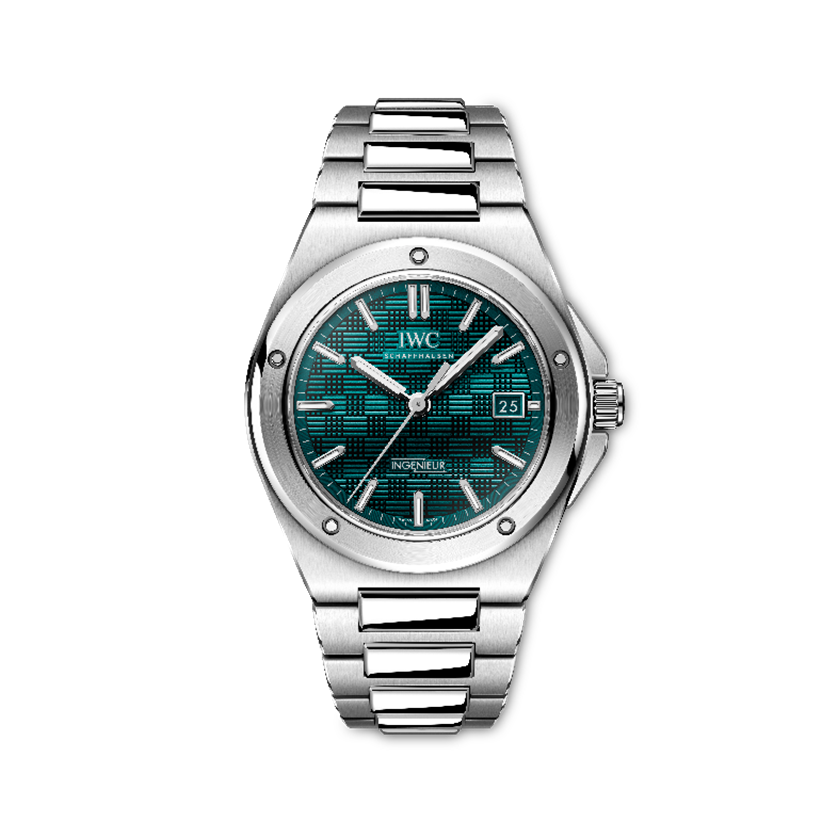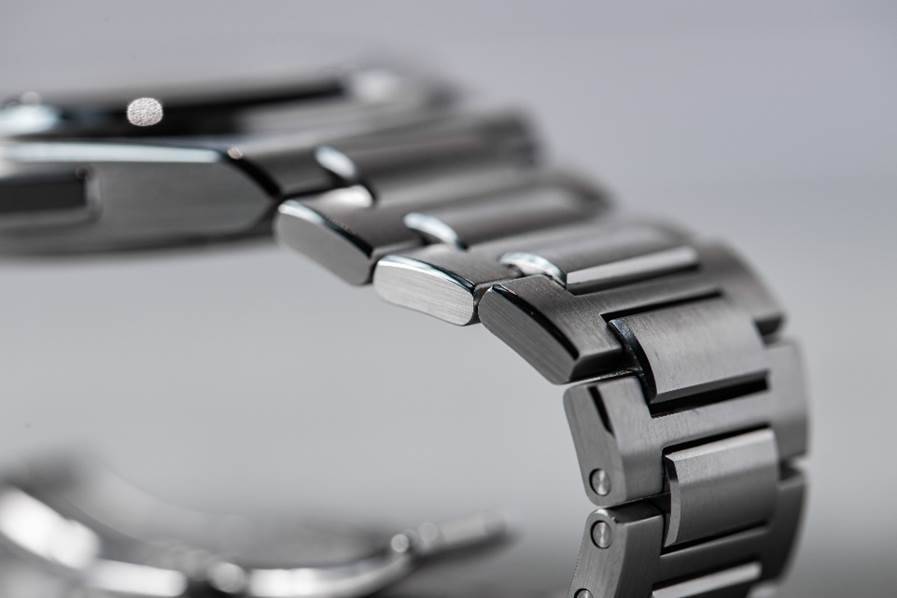It has been a while since I posted an article. It is always good to be back
in the action.
With the recent announcement of the new 2023 Ingenieur series, I wrote a post
on a watch forum in Hong Kong (in Chinese).
Some net friends were asking about it, so let me rewrite it in English, post
it here and share with you some of my thoughts.
The Oscars Academy Awards this year attracted a lot of attention. Many
awardees shared their moving stories on stage as they gave their speech.
Quite a number of them have worked diligently in Hollywood, even becoming a
top star/celebrity/talk-of-the-town at one point in their acting career.
Nonetheless, many faced adversity and got hit hard by reality in this cut-
throat industry. Despite their hard work and being the unsung heroes in the
industry, many failed to receive the recognition and appreciation they
deserved from their audience. This year, their years of hard work finally
paid off, as they won the academy awards! We can certainly use the phrase
"the greatest comeback" to describe this year's Oscars.
By the same token, there are plenty of designs within the watch industry that
received recognition in the past. Perhaps they too are waiting to have a
great comeback.
One of which is no doubt Gerald Genta's designs. Gerald Genta, a master in
watch design, needs no introduction. IWC once hired Genta to help design its
Ingenieur SL. Years ago, IWC decided to stop manufacturing Genta-inspired
Ingenieurs in favor of releasing a series of Ingenieurs that are based on the
original 666 Ingenieur design. Despite IWC's biggest effort, however, the
666-inspired Ingenieurs did not receive a lot of approval from fans and watch
buyers. Many fans and buyers are still eagerly waiting for Genta-inspired
Ingenieurs to return.

(IWC Ingenieur SL)
IWC finally answered fans' demand this year. At this year's Watches &
Wonders, IWC announced the release of a new Ingenieur series. This series
oozes many Genta's design elements of the original Ingenieur SL. Rumors said
that IWC had this new Ingenieur design for years. Instead of releasing it
back then in a rush, IWC took the time to refine it for years--in hope not to
disappoint Ingenieur fans.
Four models of new Ingenieurs were announced:
IW328901 Black dial Stainless Steel

IW328902 White dial Staineless Steel

IW328903 Aqua Dial Stainless Steel

(rendition of aqua-dial ingenieur)
And IW328904 Titanium

(Rendition of titanium ingenieur)
So, what are the differences between these new models and the previous IW3227?
There are many!
As a start, the newer ones have a smaller dial (40mm vs. the previous 42mm),
not to mention they are much thinner (10.8mm vs the previous 14.5mm), and much
lighter than the previous 3227 models. Many people might have the impression
that wearing the previous 3227 series of Ingenieurs can be quite a burden.
They will be delighted to learn that the latest models are much more wearable.
Another two big reasons why someone with a smaller wrist found wearing the
previous 3227 models to not be too comfortable could be: 1) 3227 lug extended
a bit too far out. Furthermore, the first center-link was fixed and could not
rotate. Together they made wearing the watch on a smaller wrist somewhat
uncomfortably large; 2) The base of the relatively huge and heavy watch was
flat. Wearing it back then may feel like having a big piece of heavy iron
disc sitting on one's wrist. I imagine these two factors together prevented
many people from buying and wearing the previous 3227 Ingenieurs--although
they might find the watch appealing. IWC has improved upon these two design
"shortfalls" from the 3227 by: 1) Making the first center-link rotatable; 2)
designing the base of the watch to be slightly curved. These have made the
watch lugging more nicely around one's smaller wrist.


(Latest Ingenieur vs 3227. Note the difference of the first center-link
design).
Looking at the new Ingenieur's bezel, one will immediately notice 5 screws.
According to IWC, these screws serve a real purpose--fastening the bezel onto
the case. These screws' orientations are aligned. Unlike some other brands,
some watches may not have their screws all aligned, giving them a not-so-
professional look. These screws on the Ingenieur are not very big. So,
without my reading glasses on, I could hardly tell if they were all properly
aligned. When you all see the watch in real life, you can be the judge to see
their alignment.
The dial has what IWC called a "grid" design. This also added some more
dimensions and depths to the dial. I believe it pays tribute to Ingenieur
SL's "waffle" dial decades ago. Thinking back on the 3227, its dial also has
some embossed design. Looking more closely at the 3227 dial, you will find
many letter "I" on the dial weaving a pattern. Back then this design gave
buyers a pleasant surprise to those who closely examined their watches.
Perhaps the new "grid" design with straight lines (forming a checkerboard type
of look) also pays tribute to the "I"-filled dial of the 3227? I have not
seen the aqua-dial in person yet, but I presume looking at it from different
angles, and under different lighting conditions, will see it has a very
different look and colors of shading.

(Ingenieur SL with a "waffle" dial)

(3227 with "I"-filled dial)
An applied old IWC logo like that of the Ingenieur SL at 12 o'clock can no
longer be found on the new Ingenieur. Nor will one find any applied Arabic
numerals at 12 and 6 o'clock on the new watch. Instead, a pair of more simple
applied indices. Are now situated at the 12 o'clock position.
I believe this simplifies the design, especially considering the watch is now
smaller than its predecessors, hence, fewer things to clutter up the dial.
For me personally though, I prefer having the applied Arabic numerals on the
3227, which made the watch looks a bit more special. However, there might be
an added benefit for NOT having Arabic numerals on the dial. In the case of a
chronograph, there is less likely to have any "broken numerals" on its dial,
which get mixed reviews from the critics. Quite frankly though, I also like
the styling of broken numerals, I think it added character to the watch. The
indices on the new Ingenieur all point towards the center of dial, which also
pay tributes to the original Ingenieur SL.


(examples of "broken numerals"--IWC 3227 and 3725)
I am actually glad to see crown guards on the new Ingenieur, protecting the
crown from any accidental damage. I believe this comes with IWC's years of
developing (and servicing) the Ingenieur series. As a sports watch with form
and function, I think the crown guards will help make the new Ingenieur be
more rugged and durable than the 3227.

(close-up shot on the crown guard)
IWC carefully applied different kinds of polishing and finishing on the new
watch. The long-history of delicate intertwining use of mirror-polish and
brushed finishing are applied to give this watch a sharp and eye-catching
look. All of the edges my eye could see are mirror-polished. The center-
links of the new watch extend out quite a bit more than those of the 3227,
giving the new watch a bit more of a 3D look with more depth. I think a
similar design was used on the recent Portugesers' bracelets.
One feature that sets the Aqua-dial one apart from the black and white ones is
that its center-links are all mirror-polished (as opposed to brushed ones for
the black and white). I have not seen the aqua one in person yet, but I
imagine it will look quite a bit sharper due to its more flashy bracelet
design. My suggestion, however, is to bring along with you a Cape Cod
polishing cloth for those aqua-dial owners who wish to maintain its bracelet a
shiny look.

(rendition of aqua-dial ingenieur, showcasing its mirror-polished center
links).
As for the bracelet of the watch, IWC still uses its signature mechanism for
removing and adding links. No screwdriver or special tools to use for
resizing the bracelet. Nonetheless, unlike the previous watches, it seems
like this mechanism is not used on all the links, at least not the last few
links closest to the lug. Although some people may find not all the links
having this mechanism a bit lacking, how often do we need to take every link
of the bracelet apart, except perhaps when doing a full clean-ups/service back
in the factory? Looking closer to the lug, one may also find that the
bracelet is not fixated by the IWC removable mechanism, but instead, by a
push-pin. Why do they opt for a push-pin instead? That many be many reasons…
perhaps it will allow simpler changing of straps in the future? When looking
at the watch, I saw no quick-change bracelet function. Not sure if that
option will be provided in the future.

(the last 3 center links do not feature the IWC link-removable mechanism)
The design of the deployant clasp is much more elegant than its predecessors.
There is no big buckle on the end of the bracelet. This gives owners a true
"integrated bracelet" that a Gerald-Genta-design watch deserves. The only
thing seems missing is a micro-adjusting mechanism. As the saying goes, I
guess we cannot have the cake and eat it too. Let's wish one day IWC can
invent a micro-adjustable deployant buckle that is elegant looking, reliable
yet worthy to be claimed as part of an "integrated bracelet."(at the
time of me rewriting this article in English, IWC already promised to provide
a buckle with micro-adjustment feature to those who want it… alas, it is just
the big and bulky, relatively non-attractive looking, one IWC has been
providing in recent years). www.youtube.com/watch?v=YFxFrFLFmf0

(new ingenieur bracelet indeed features an "integrated bracelet")






